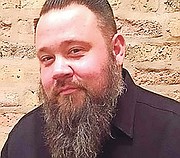By FARRAH JOHNSON
INTERNATIONAL non-profit organisation Cure Violence yesterday said the only way to cure violence is by treating it like a disease.
The group presented a new technique to address crime in Bahamian communities at a meeting with Rotary Club of Southeast Nassau yesterday.
The Cure Violence model is based on the World Health Organization's (WHO) approach in working to prevent the spread of contagious illnesses.
The model applies three strategies, which include: "Detecting and interrupting potentially violent conflicts, identifying and treating individuals at the highest risk, and mobilising communities to change norms."
With the goal of decreasing violence through "disease control and behaviour change methods", the programme has already reduced shootings in one of Chicago's largest crime hotspots by 67 percent.
R. Brent Decker, chief programme officer of Cure Violence, said: "This programme was started by a physician, an epidemiologist who worked at the World Health Organization's (WHO) for about 20 years."
"He thought to offer to the conversation: What does the health or public health view or lens of violence have to add to this conversation? Because often times we're caught in between the issue of (if) it's more law enforcement, or (if) it's solely poverty that needs to be fixed, and I think the health lens offers a kind of middle ground between some of that stuff," he continued.
Mr Decker said reputable health organisations such as the American Medical Association (AMA), the Centre for Disease Control and Prevention (CDC), and WHO, all regard violence as a health issue.
He added it is important to consider the kinds of policies and practices that will "curve and reduce" violence in areas where it is prevalent.
"The other thing that's obvious of why violence is a health issue (is because) it's a leading cause of death in many cities for young people. So in Chicago for young people between the ages of 16 and 27, they're not dying of car accidents, they're not dying of tuberculosis; they're dying of gunshot wounds. This is true in Honduras, this is true in El Salvador, this is true in South Africa," he said.
The chief programme officer admitted that violence being categorized as a "contagion" was actually "good news", because knowledge on how to address diseases and stop epidemics is widely available.
Still, he insisted specific "characteristics" have to be met in order to understand violence "scientifically".
This includes "geographic clustering, epidemic waves, the mode of transmission, as well as the characteristics of that particular population".
Mr Decker said: "We see that there are geographical clustering characteristics of where violence is taking place… it tends to happen in specific areas over time. Second, it spreads like a disease, but what we understand about other things like influenza or cholera is that there can be kind of a spike if something happens, then you see multiple cases after it. Violence follows a very similar pattern in terms of a significant number of cases."
"I thinks it's important for us to rethink about violence as simply a human behaviour...these are all human behaviours that are formed, maintained, and can be changed, (and) we know scientifically and problematically, how to do all these things."
"But I think we're stuck in the idea that this is bad people that need to be punished, and we're not understanding the epidemic nature of violence. We make bad policy decisions, and bad practice decisions on how to actually to address it," he said.
Mr Decker said the brain is the organ that is affected the most by violence, and said the infection spreads through "observing, witnessing, or experiencing trauma".
He acknowledged that multiple factors including the media, the community, and family, contribute to the exposure of violence that has the potential to "influence someone's susceptibility to being violent or acting violent."
He said the cycle of violence present in The Bahamas is a result of retaliation offenses, but to control the epidemic it is necessary "to interrupt transmission, prevent future spread, and change group norms."
Explaining the role of an interrupter, Ricardo Williams, deputy director of Cure Violence, said: " An interrupter job is mainly like a firefighter. When somebody is interrupting in the community -a lot of shooting taking place, the interrupters put out the blaze. But they also focus on stopping the shooting and killing on the front end before it happens."
"So what an interrupter does day-to-day, is being out there everyday, canvassed in the area, building relationships, meeting people where they are, (and) not being judgmental. We don't look at people as good and bad people, we understand that people make bad choices, but we get to know them and help them get to the next level," Mr Williams said.
Mr Williams added it is common to assume what people are going through, but it is better to let them share their story themselves.
The Cure Violence model has been successful in 53 communities and 25 cities around the world. The National Institute of Justice, the Center of Disease Control, the Bureau of Justice of Assistance, and the University of Chicago have also independently assessed it.
Mr Decker said the group does plan on meeting with the commissioner of the police. "We just had an independent evaluation of our work done in Trinidad in Port of Spain, where they found that this programme had significant impact on shootings, killing, hospital admissions, and gunshot wounds," Mr Decker said.





Comments
Use the comment form below to begin a discussion about this content.
Sign in to comment
Or login with:
OpenID